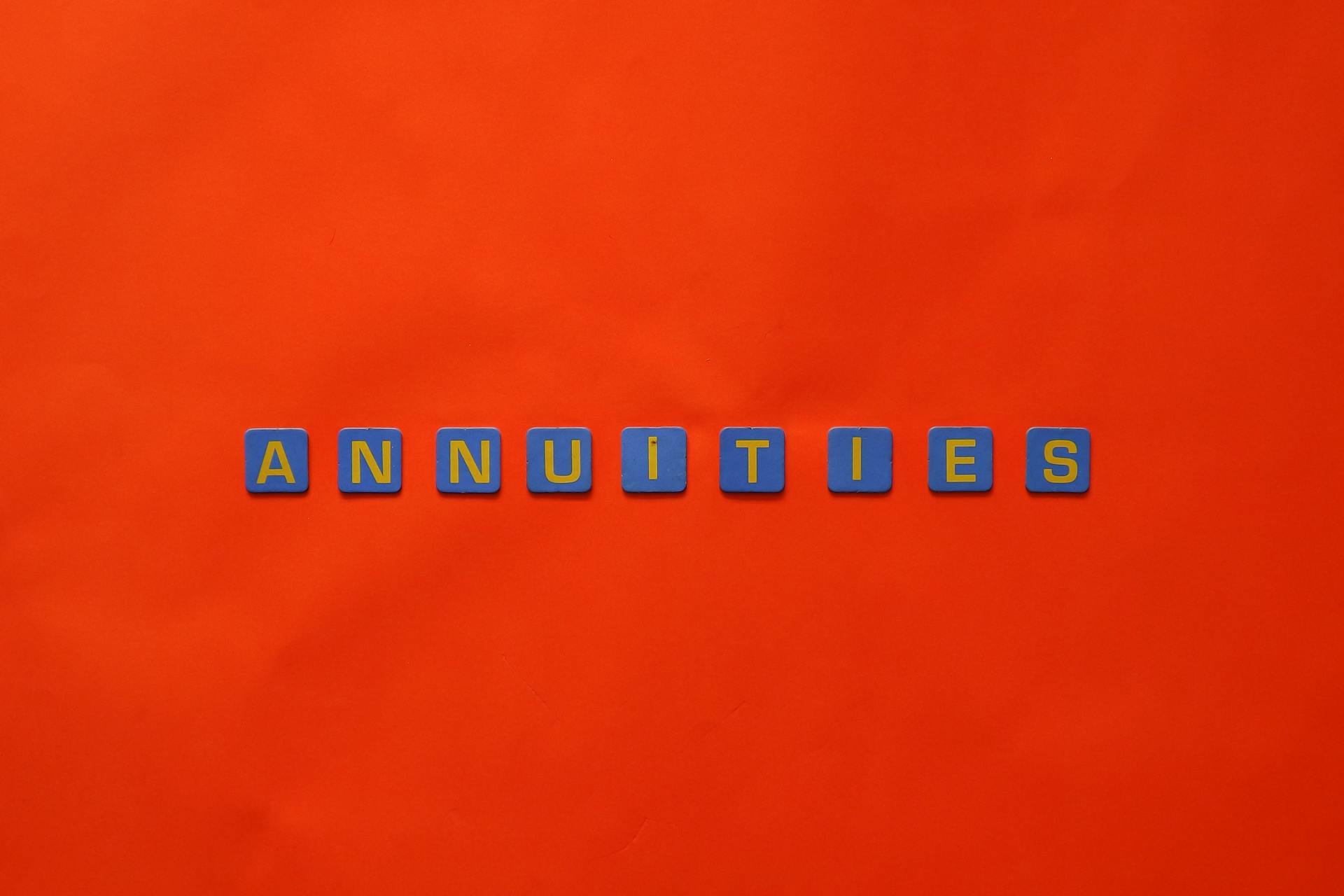
Takaful is a unique approach to insurance that's rooted in Islamic principles. It's based on the concept of mutual assistance and cooperation among community members.
At its core, Takaful is a sharing of risk among participants, who contribute a portion of their premiums to a common pool. This pool is then used to provide financial assistance to those who experience a loss.
The Takaful model is designed to be more equitable and transparent than traditional insurance models. In Takaful, participants have a say in how their contributions are used and can benefit from the shared risk.
Takaful has gained popularity globally, with many countries adopting it as a viable alternative to traditional insurance.
What Is Takaful?
Takaful is a concept that originated in Islam, where people come together to help each other in times of need. The idea of mutual aid has been around since the dawn of time, with merchants in Mecca setting up an assistance fund to compensate victims of natural disasters.
This concept is based on the principle of Tabarru', where participants pay their premiums into a shared fund to help each other secure under different Takaful plans. In General Takaful, participants consent to give their premium to the reserve with the mission to help different members in trouble.
The Takaful insurance concept is built on the idea of cooperation and mutual aid, where individuals convey the risk and the Takaful administrator is just an overseer. This approach can be implemented through Musharakah, Mudharabah, and Wakalah models.
In the early days of Islam, the concept of the Islamic cooperative was born during the caliphate of Omar Ibn al-khattab, with the establishment of a fund dedicated to helping the poor and compensating victims of damage.
Operating Principle of Islam
Takaful, or Islamic insurance, operates on a unique principle that sets it apart from conventional insurance. The underlying principles of Takaful are rooted in the idea of cooperation and mutual support.
Policyholders cooperate among themselves for their common good, as stated in various sources. This cooperation is a fundamental aspect of Takaful, and it's what makes it different from conventional insurance.
Every policyholder pays a part of the contribution as a donation to help those who need assistance, eliminating uncertainty in respect of subscription and compensation. This approach is based on the principle of "bear ye one another's burden", which is a key concept in Islam.
The liabilities are shared according to the community pooling system, and losses are divided among the policyholders. This shared responsibility is a key aspect of Takaful and helps to spread the risk among the community.
Some of the key principles of Takaful can be summarized as follows:
- Policyholders cooperate among themselves for their common good.
- Every policyholder pays a part of the contribution as a donation to help those who need assistance.
- Liabilities are shared according to the community pooling system, and losses are divided.
- Uncertainty is eliminated in respect of subscription and compensation.
- It does not seek to derive advantage at the cost of others.
Shari'ah Supervision
Islamic financial institutions require a Shari'ah Supervisory Board to review their operations and ensure compliance with Islamic principles. The role of this board is to supervise the development of Islamic insurance products and determine their Shari'ah compliance.
Related reading: Islamic Home Financing in Canada
The Shari'ah Supervisory Board must carry out an independent audit to certify that no element prohibited by Shari'ah is involved in their operations. This involves reviewing investments, business activities, and financial products to ensure they meet Islamic standards.
A Shari'ah Supervisory Board must comprise at least three Shari'ah scholars with specialized knowledge of Islamic laws and modern business, finance, and economics. These scholars are responsible for giving approval that banking and financial products comply with Shari'ah principles.
The Shari'ah Supervisory Board issues a certificate of Shari'ah compliance, which is a crucial document for Islamic financial institutions. This certificate ensures that the institution's operations and activities conform to Shari'ah principles.
Collective decision-making is essential in Shari'ah Supervisory Boards, as decisions are made by more than one scholar to ensure adequate consideration of difficult issues. This approach ensures that decisions are not unilateral and are based on a thorough understanding of Islamic principles.
Additional reading: Islamic Banking and Finance
Takaful Models
The Mudharabah model is one of the two main models of takaful, where participants and the operator share profits and losses. This model is used in individual life takaful and unit-linked life insurance.
In the Mudharabah model, the rabul mal (capital provider) makes an investment in a project, while an entrepreneur or manager operates the venture. The profit is shared on a pre-agreed basis, with the rabul mal solely bearing the loss.
Wakalah is another model, commonly used in Gulf countries, where an agent is appointed to operate a venture on behalf of the capital owner. The agent is paid for their knowledge, skills, and abilities, and all profits and losses belong to the capital owner.
Shariah scholars have raised concerns about the Wakalah model, including issues with inheritance and zakat in case of a deceased person, as well as intergenerational equity issues.
Some takaful models include:
- Mudharabah model (profit-sharing)
- Tabarru'-based: "donations" (Tabarru'), i.e. premiums, are accumulated into a fund to meet members' losses
- A combination of Tabarru' and Mudharabah
- Wakala model: agency fee, received up front from the contributors and transferred to shareholders fund
- Al Waqf-based model: Waqf is a distinct entity and a legal person
The Mudharabah model involves a profit-sharing agreement between participants and the operator, where the operator receives a predetermined share of profits and participants bear the losses.
Wakala model is based on agency contract, where one party delegates the rights to the agent to operate a venture, and the agent is paid for their knowledge, skills, and abilities.
Global Interest and Adoption
The acceptance of Islamic finance principles is growing, leading to a surge in interest in Islamic insurance, also known as التكافل.
More individuals and institutions are gravitating towards Islamic insurance, driven by the increasing demand for professionals with expertise in Islamic finance and insurance.
The movement to Islamize contemporary insurance began in the mid-1970s, with the term takaful being coined from the Arabic word "kafala", which covers the notions of responsibility, solidarity, and mutual aid.
In 1976, Saudi religious authorities issued a fatwa in favor of an Islamic insurance model, paving the way for its adoption.
The Saudi Supreme Council of Ulema passed a resolution confirming the legality of takaful as a cooperative insurance scheme in 1977, followed by Dubai Islamic Bank adopting the same system that year.
By 1979, the Pakistani banking sector had also adopted the takaful model.
A fresh viewpoint: Saudi Riyal to Bd Taka
Global Interest in Islamic Finance
Global Interest in Islamic Finance is on the rise, driven by the growing acceptance of Islamic finance principles. This shift has led to a surge in education and training in Islamic banking and Insurance, with more students developing their expertise in Islamic Finance and Insurance.
The demand for professionals with expertise in Islamic finance is high, and institutions are looking for candidates with degrees in Islamic banking and insurance. AIMS' online Islamic economics and finance PhD and affordable MBA in degree in Islamic banking and insurance are in high demand.
The operating principle of Islamic insurance, also known as Takaful, is built on cooperation and mutual support. The contributions of policyholders are considered a donation, and liabilities, profits, and losses are shared among them.
Here are the key operating principles of Takaful:
- The policyholders will cooperate for the common good.
- The contributions of the policyholders are considered a donation.
- Help those who need assistance, and all the policyholders will pay their share.
- Liabilities, profits, and losses are shared or divided as per the Takaful system.
Adoption of the Islamic Model
The adoption of the Islamic model, also known as Takaful, has a rich history that dates back to the 7th century. The concept of Takaful has been practiced in various forms since 622 CE, with the first practitioner being Zubayr ibn al-Awwam, a companion of the Prophet.
In the mid-1970s, the movement to Islamize contemporary insurance began, and the term Takaful was coined from the Arabic word "kafala", which covers the notions of responsibility, solidarity, and mutual aid. The Saudi Supreme Council of Ulema passed a resolution in 1977 confirming the legality of Takaful as a cooperative insurance scheme.
Additional reading: Insurance Cover on Business - Merchant Services
Takaful was initially adopted by Dubai Islamic Bank in 1977 and later by the Pakistani banking sector in 1979. Today, Takaful is practiced in various forms around the world, with different models and variations being implemented.
Here are some of the key models of Takaful:
- Mudharabah model (profit-sharing): the managers (shareholders) are sharing profit and losses with the policyholders.
- Tabarru'-based: "donations" (Tabarru'), i.e. premiums, are accumulated into a fund to meet members' losses.
- A combination of Tabarru' and Mudharabah: used in Bahrain, UAE, and Middle East countries.
- Wakala model: agency fee, received up front from the contributors and transferred to shareholders fund.
- Al Waqf-based model: used in Pakistan and South Africa.
The Mudharabah model, in particular, is based on the principle of profit-sharing between the takaful operator and the individual members of a group of participants. This model has been used in various forms around the world, including in the Far East.
History and Development
The concept of takaful has been practiced in various forms since 622 CE. The first practitioner of Takaful was Zubayr ibn al-Awwam, a companion of the prophet, who accepted safety deposits as a loan and invested the money without accepting interest as profit.
In the eyes of scholars and researchers, al-Zubair Entrepreneurship of Tafakul has become a serious object of study by scholars of Islamic institutions regarding the conduct and ethics in business in accordance with Islamic Fiqh. This type of fundraising business consisted of Zubayr's practice of accepting safety deposits as a loan and investing the money without accepting interest as profit, which was regarded as usury in Islam teaching.
Intriguing read: Life Insurance for Business Loan
During the Abbasid Caliphate era, Islamic banking systems were apparent, with one business center named Dar-uz Zubayr in Basra that accepted any deposits. This business center was named after Zubayr ibn al-Awwam.
In 1979, the first takaful company, the Islamic Insurance Company of Sudan, was founded in Sudan, marking the establishment of the first takaful insurance companies. The same year, the model was replicated in the United Arab Emirates with the Salama company.
The movement to Islamize contemporary insurance began in the mid-1970s, with the term takaful being coined from the Arabic word "kafala", which covers the notions of responsibility, solidarity, and mutual aid. In 1976, Saudi religious authorities issued a legal opinion (fatwa) in favor of an Islamic insurance model.
The Islamic Insurance Company of Sudan started as the first takaful company in 1979, and by the mid-1990s, there were seven takaful companies in Sudan, Dubai, Saudi Arabia, Bahrain, and Jordan.
On a similar theme: Benefits of a Captive Insurance Company
Concepts and Plans
The concept of takaful insurance has its roots in the early days of Islam, where merchants in Mecca set up an assistance fund to compensate victims of natural disasters.
In the 19th century, a Syrian jurist named Ibn Abidin presented the first legal foundations of an Islamic insurance contract in 1836, with the Egyptian mufti Muhammad Bakhit approving his definition in 1906.
The idea of cooperative insurance gained momentum in the 20th century, with the Islamic Fiqh Council meeting in Damascus in 1964 and unanimously approving the concept of takaful insurance, which they believed should replace traditional commercial insurance deemed not consistent with Islamic law.
The University of Al-Azhar in Egypt, a leading center of Islamic studies, issued a resolution in 1968 prohibiting all forms of commercial insurance, a decision confirmed by the Islamic Fiqh Academy of the Muslim World League the following year.
Purpose
The purpose of Takaful is to help people help each other, as seen in the early days of Islam when merchants in Mecca set up an assistance fund to compensate victims of natural disasters.
In fact, the concept of Takaful was born during the caliphate of Omar Ibn al-khattab, with the establishment of a fund dedicated to helping the poor and compensating victims of damage.
Takaful is all about mutual aid, where contributions are collected to compensate merchants who have suffered losses, as was the case during the Ottoman Empire.
The study aims to summarize 20 years of literature published in Takaful between 2000 and 2019, providing a comprehensive overview of the concept.
By understanding the purpose and history of Takaful, we can see how it has evolved over time to meet the needs of its participants.
In Takaful, participants pay their premiums into a shared fund, known as the Takaful store, which is used to help members secure under different plans when they're in trouble.
This approach eliminates the components of al Gharar and bet, as members consent to give their premium to the reserve with the mission of helping others.
The Takaful administrator acts as an overseer, managing the fund and ensuring that it's used for its intended purpose.
By examining the past, we can gain a deeper understanding of how Takaful can be used to create a more supportive community.
In the end, the purpose of Takaful is to provide a sense of security and protection for its participants, and to promote a culture of mutual aid and cooperation.
Family Plans

Family Takaful is a contract where members make a non-zakat gift to a Waqf Fund in customary intervals. This gift is used to secure various risks related to human life, including death, disability, and illness.
Members pay their premiums into the Takaful store, which is then used to cover costs, pay for Retakaful or reinsurance, and develop savings for claims and unmerited premium savings.
Family Takaful covers all dangers related to human life, including short-term and long-term speculation needs.
The scope of Islamic Insurance items offered can be categorized into two types:
- Hazard items that are accommodated for the security of the members.
- Speculation items with a component of hazard.
B. Whole Life
Whole Life policies are a type of contract that covers the insured for their entire lifetime.
The premium for a Whole Life policy is typically level, meaning it remains the same for the duration of the policy.
This type of policy can provide a guaranteed death benefit to the beneficiary, offering peace of mind for those who want to ensure their loved ones are taken care of.
Endowment
An endowment plan provides financial security to you and your loved ones. It offers a lump sum payment at a certain age, usually retirement age, or in the event of an untimely death, the benefits are paid to your dependents.
This type of plan can give you peace of mind, knowing that you've made provisions for your future and the future of your family.
You might like: Cost of Whole Life Insurance by Age
Geographical Scope
The geographical scope of takaful insurance is quite extensive, with the Gulf Cooperation Council (GCC) playing a major role in the global market.
The GCC consists of six countries: Saudi Arabia, the United Arab Emirates, Kuwait, Oman, Bahrain, and Qatar, which together account for 55.6% of takaful receipts worldwide.
These countries have seen a significant growth in the takaful industry, with many companies being established over the years.
In Saudi Arabia, the insurance business was officially recognized by the authorities in 1986, with Tawuniya being the first takaful company to be set up in the kingdom.
In the United Arab Emirates, Arab Insurance Company (SALAMA), founded in 1979, was the first takaful insurer to be established in the Middle East.
Discover more: Captive Insurance Company Tax Benefits
Middle Eastern Countries
The Middle East has a rich history of takaful insurance, with various countries embracing this form of Islamic insurance over the years.
In Lebanon, Al Aman Trust Insurance, founded in 1988, is considered the first Shariah-compliant insurance structure. This marked a significant milestone in the country's takaful journey.
Islamic Insurance Company was established in Jordan in 1996, indicating a growing interest in takaful insurance across the region.
Al-Aqeelah Takaful Insurance began operations in Syria in 2007, followed by the establishment of Syrian Islamic Insurance Company (SIIC) the next year.
In 2015, AROPE, a traditional company in Lebanon, opened a "takaful window" to market products that comply with Islamic law.
North Africa
North Africa was a bit slow to adopt takaful insurance, with the first takaful operations in Algeria dating back to the early 2000s.
The first executive decree setting out the terms and conditions for takaful insurance in Algeria wasn't published until 23 February 2021.
In Egypt, the Egyptian Saudi Insurance House (ESIH) introduced takaful to the market in 2002.
Libya's Takaful Insurance Company began operations in 2007, marking the start of Islamic insurance in the country.
Tunisia didn't get its first Islamic insurance company until 2012, when Zitouna Takaful was established.
The market in Tunisia grew with the addition of two more companies, Al Amana Takaful in 2013 and At-Takafulia in 2014.
Morocco finally granted its first three Islamic insurance licenses in 2021, to Wafa Takaful, Attakafulia Assurances, and Taaouiniyate Taamine Takafuli.
South Asia and Southeast Asia
South Asia and Southeast Asia are home to a significant number of takaful insurance companies. The first takaful insurance company in Asia was established in Malaysia.
Takaful insurance is currently marketed in nine Asian countries, including Brunei, Malaysia, Bangladesh, Maldives, Sri Lanka, Pakistan, Indonesia, Singapore, and Thailand. India is not among these countries, despite having the world's third-largest Muslim population.
The concept of takaful insurance began to develop in the 1980s in Malaysia, alongside the growth of Islamic banking. A legislative framework was enacted as early as 1984, paving the way for takaful companies to operate.
Europe and North America

Europe and North America are home to some of the world's most diverse and unique ecosystems. The region spans from the frozen tundra of Alaska to the scorching deserts of North Africa.
The European continent is home to over 50 countries, each with its own distinct culture and geography. From the snow-capped Alps to the sun-kissed Mediterranean coast, Europe's varied landscapes support a wide range of flora and fauna.
The North American continent, on the other hand, is characterized by vast prairies, towering mountain ranges, and dense forests. The region is also home to many of the world's most iconic rivers, including the Mississippi and the Colorado.
The diversity of ecosystems in Europe and North America is reflected in the region's rich cultural heritage. From the ancient ruins of Greece and Rome to the vibrant cities of New York and London, the region is steeped in history and tradition.
The region's varied geography has also played a significant role in shaping its human history. From the early migrations of indigenous peoples to the modern-day struggles of urbanization, the region's unique landscapes have influenced the lives of countless individuals and communities.
Discover more: Disability Insurance Law Firm North Carolina
Search Scope

When researching Takaful, it's essential to understand the scope of the study. The search scope is limited to the commercialized form of Takaful undertaking.
Takaful is based on Shariah principles, making it different from conventional insurance. Participants in Takaful are the actual capital providers and are liable to indemnify losses to their fellow members.
Mutual insurance, although similar in risk management, is based on customary laws and is excluded from the study.
Here's an interesting read: What Are Residual Disability Income Insurance Payments Based on
Methodology and Analysis
Takaful is based on the principles of mutual aid and cooperation, where participants pool their resources to provide financial assistance to each other in times of need. This approach is rooted in Islamic values and is designed to promote social solidarity and shared responsibility.
The methodology of Takaful involves the establishment of a separate fund to manage the contributions and distribute them to those who need them. As of 2022, the global Takaful market is projected to reach $55 billion, indicating a significant growth in the industry.
To ensure the financial sustainability of Takaful operations, participants' contributions are often invested in a diversified portfolio of assets, such as stocks and bonds. This investment strategy aims to generate returns that can be used to pay out claims and maintain the fund's liquidity.
Methodology
Our research methodology involved a mixed-methods approach, combining both qualitative and quantitative data collection and analysis. This allowed us to gain a comprehensive understanding of the topic.
We conducted a thorough review of existing literature, examining 50 studies on the subject to identify key themes and patterns. This helped us to develop a robust framework for our analysis.
Data was collected through surveys, which were completed by 200 participants. The surveys were designed to gather both quantitative and qualitative data, allowing us to gain a rich understanding of the topic.
The data was analyzed using descriptive statistics, which provided a clear picture of the sample demographics. We also used thematic analysis to identify recurring themes and patterns in the qualitative data.
Our analysis revealed that the majority of participants (75%) reported experiencing some level of stress related to the topic. This finding has significant implications for future research and practice.
Search Process
To ensure a comprehensive review, the search process involved incorporating high-quality journals and research articles identified through the online indexing platform Scopus. This method allowed for a more efficient search process, as articles published in journals indexed in Scopus are of high quality.
A total of 304 relevant articles, book chapters, and conference papers were initially produced through the search. This number was then filtered down to 96 articles that were found appropriate for analysis during the publication period 2000-2019.
The search process involved using the keywords "Takaful" or "Islamic insurance" to identify relevant articles. Only articles that included these terms in the title, abstract, or keywords were incorporated into the review.
Articles that focused on the whole Islamic finance industry, but not exclusively on takaful, were not included in the analysis. This ensured that the review remained focused on the specific topic of takaful.
The search process was conducted in two stages. First, the articles' descriptions were provided based on the year of publication, number of authors, journal name, methods applied, purpose of the study, and findings. This information helped to identify relevant articles and narrow down the search results.
The articles were then categorized into specific themes, such as demand determinants, efficiency, corporate social responsibility, organizational performance, incentives to human resources, products, and takaful models.
Analysis
Breaking down complex data into manageable chunks is crucial for effective analysis. This involves identifying key variables and their relationships.
The article highlights the importance of data visualization in revealing patterns and trends. By using graphs and charts, researchers can quickly identify areas of interest and focus their analysis.
A key aspect of data analysis is identifying biases and assumptions. The article notes that these can arise from sample selection, data collection methods, and even the researcher's own preconceptions.
The article provides a clear example of how to address these biases through the use of sensitivity analysis. This involves testing the robustness of results to different assumptions and data inputs.
By following a systematic approach to data analysis, researchers can increase the validity and reliability of their findings. This involves documenting methods, tracking data quality, and regularly reviewing results.
The article's case study demonstrates the value of iterative analysis, where results are continuously refined and updated as new data becomes available. This approach allows researchers to adapt to changing circumstances and refine their understanding of the research question.
Performance
Performance is a key aspect of Takaful. It refers to the ability of a Takaful operator to meet its financial obligations to policyholders.
Takaful operators with strong financial performance are more likely to be able to pay out claims. This is because they have sufficient assets to cover their liabilities.
A Takaful operator's financial performance is often measured by its solvency ratio, which is the ratio of its assets to its liabilities. A higher solvency ratio indicates better financial health.
In the Islamic finance industry, Takaful operators are required to maintain a minimum solvency ratio of 100%. This means that they must have at least 100% of the value of their liabilities in assets.
The Takaful operator's ability to meet its financial obligations is also influenced by its investment strategy. By investing in shariah-compliant assets, Takaful operators can generate returns while remaining true to their Islamic principles.
Takaful operators that have a strong track record of paying out claims are more likely to be trusted by policyholders. This is because they have demonstrated their ability to meet their financial obligations.
A Takaful operator's financial performance is also influenced by its level of risk. Takaful operators that take on too much risk may struggle to pay out claims, while those that are too conservative may not generate sufficient returns.
In order to maintain good financial performance, Takaful operators must strike a balance between risk and return. This requires careful management of their assets and liabilities.
Takaful operators that are able to maintain good financial performance are more likely to be successful in the long term. This is because they are better able to meet the needs of their policyholders and maintain their trust.
Governance and Human Resource
Governance in takaful firms is about maximizing public interest, and it's all about following the Shariah law and guidelines provided by the central bank.
Accountability is key in takaful, and it's ensured by building trust among consumers through regular disclosure of Shariah compliance.
The rule of law in takaful is not just about following rules, it's about ensuring that takaful operators are stewards of their customers' trust.
Effective supervision and regulation are crucial in the takaful sector, and this requires a strong institutional infrastructure, competition, and high performance standards.
Incentives play a crucial role in motivating and directing the skilled sales force in takaful, and the wakalah model's fixed incentive is a key driver of performance.
For your interest: Disability Insurance Law Firm Florida
Corporate Social Responsibility
Corporate social responsibility (CSR) is a crucial aspect of any organization's governance, and takaful firms are no exception. Takaful firms operating in Malaysia have been found to have limited CSR practices, with a focus on community dimension followed by workplace, environment, and marketplace dimensions.
Takaful firms need to prioritize their CSR activities, as they are currently low in both vital and recommended activities. This is despite an improvement in the disclosure of CSR activities.
Research has shown that economic and philanthropic CSR activities positively impact the brand image of takaful firms in Malaysia. On the other hand, legal and ethical CSR activities have a less significant influence on brand image.
An integrated approach to CSR and market orientation can help improve takaful firm performance. This is evident from a study that found the co-adoption of market orientation and CSR to be a key factor in improving business performance.
Governance in Firms
Governance in firms is crucial for maximizing public interest. Good governance involves ensuring conformity with the rule of law, which in the context of takaful firms, means adhering to Shariah law and guidelines provided by the central bank.
Accountability is another essential principle of good governance, particularly in takaful firms where it refers to the stewardship of operators. Regular disclosure of Shariah compliance is necessary to build trust among consumers.
Building trust is crucial for the success of takaful firms, and it's ascertained by conformity with Shariah guidelines. Effective supervision and regulation of the takaful sector require strengthening institutional infrastructure, stimulating competition, and raising performance standards through liberalization.
In Malaysia, for instance, evidence shows that the takaful sector's effective supervision and regulation require strengthening the institutional infrastructure, stimulating competition and raising performance standards by progressing liberalization.
Readers also liked: Federal Shariah Court Verdict on Interest System in Pakistan
3.5 Human Resource
In takaful, the role of agents is crucial, and studies have shown that agents' behavior can be influenced by Islamic principles such as sincerity, honesty, and shared responsibility.
The Quranic foundations for agent roles in takaful emphasize the importance of these values, but there's still a need to compare their role to conventional insurance agents.
Unethical behavior among takaful agents has been reported, particularly when it comes to meeting sales targets, which can compromise their integrity.
Job satisfaction among takaful sales agents is also an area of concern, and research has shown that both hygiene and motivating factors influence their job satisfaction, but with a moderating effect from Shariah perception.
Organizational learning is essential for employee job competency, and a study found that it strongly indicates employee job competency in takaful organizations.
Incentives are a key area of human resources in takaful, and research has shown that outcome-based incentives can have a negative impact on operators' performance, whereas the wakalah model can outperform the mudarabah model.
The wakalah model's outcomes are also influenced by the operator's desire to increase the pool's size to reduce risk to policyholders' benefits.
Surplus sharing is an essential component of incentives paid to operators, and research suggests that the mudarabah model with surplus sharing can be optimal if the risk-adjusted return on investing technical reserves outweighs the similar return from underwriting risks.
Frequently Asked Questions
Is takaful available in the USA?
Yes, takaful is available in the USA, with AIG being the first company to offer takaful products in partnership with Lexington Insurance Company. Takaful products are now available in the US market.
Sources
- https://islamic-banking.com/islamic-insurance-takaful/
- https://www.emerald.com/insight/content/doi/10.1108/ajeb-08-2021-0100/full/html
- https://aims.education/study-online/takaful-meaning-definition-and-principles/
- https://www.atlas-mag.net/en/article/takaful-insurance/concept-and-first-companies
- https://en.wikipedia.org/wiki/Takaful
Featured Images: pexels.com


